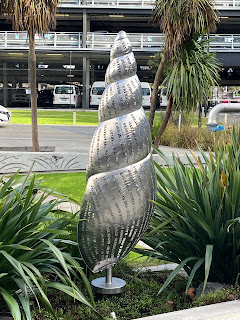Like every other education professional, I've had, or done, my share of professional development/PLD. I've 'done' it, and I've had it 'done to me'. I've had those things I've really wanted to go to, those I knew I needed to go to, and those in which I really had no interest at all, but that someone else had decided I needed to do.
I've previously written about some of the factors I think are necessary for effective change in our kura. But even with the best strategic change management processes, if staff lack the requisite skills the change is doomed to failure.
There will be those who think that the problem lies with teachers. you know the sort .. "bloody lazy teachers", they'll say. Yet I have only rarely in my career met teachers who didn't care, who didn't want the best for their students (yes I have met a couple!!). It's not as if teachers get up in the morning and say to themselves 'Righto, let's go and screw over a few kids today'. Teacher resistance to change is often driven by the view that they know best, based on current knowledge. There are those who say 'well this has worked for the last *** years, so why would I change?'. However, often when presented with information, data, and alternatives, it is possible to change the practice of those teachers. I have often argued that rarely do teachers say 'I'm just not going to change and do what you want me to do'. It's more likely (in my opinion) that they are really saying 'yeah I get it, but I don't know what that would look like in my daily practice', or 'I don't have the skills necessary to do what you are asking'. They are often also saying 'I don't have the time', or 'I'm just bloody well exhausted'. I suspect you need to have been a teacher yourself to understand that. I think that those who have never been in the profession just don't understand.
I love this piece of wisdom which, I suspect, is true for most teachers.
So, what do we know about the best way to undertake PLD? What makes professional learning 'stick'? What gives us best bang for buck, at a time (which is not in the least unusual) when there are never enough dollars to provide all of the PLD we need?
I have seen, and experienced, two very different forms of PLD. There is the PLD that arises from teacher inquiry. Arguably this is the most effective because, if done with sincerity and application and good guidance and support (the 'critical friend' thing), sees each teacher get to the heart of what needs to be done next for the learners in front of them right now. I have said before that inquiry should be 'the way we do things around here'. It is certainly an expectation and a requirement for teacher registration, as it should be. What about the more traditional forms of PLD, those delivered by the 'expert', those that look more like 'courses'? THE most effective model I have ever seen is (sounding like a broken record here, but ...) the Manaiakalani network model which is so profoundly effective it hurts.
For a number of years (sorry, but don't know how many) the Manaiakalani network has run a 'course' called the Digital Fluency Intensive. It aims to create digitally competent teachers who can implement the 'learn, create, share' pedagogy daily in their classrooms.
It's that simple. Nah seriously, that's it. Hardly rocket science, eh. The kicker in the approach (apart from the incredible levels of skill of all of the facilitators) is the one day a week away from classes to allow the teacher to focus on the skills development. So at current rates (with relief costing $300 ish per day ??) this costs the kura around $3000 per staff member. But the point is that it works. Brilliantly. EVERY teacher I have spoken to who has attended one of these DFI's describes it as THE BEST PLD in their entire career. They are upskilled, supported, and motivated, to change their practice.
And.. yes there's more. The Manaikalani network has now employed specialists to distill the best in reading and maths teaching practices, and is using the same model to upskill teachers in the teaching of reading, and mathematics. It just takes time, time that money has to buy, because you can't do this stuff in the evenings after you have got home from an exhausting day teaching, attending staff meetings, running sports practices, and ... oh yes that parent meeting for the school trip, and then used the first half of your evening to mark the student work that you have brought home with you.
And... this creates those internal experts and change agents that Dr Kevin Knight talks about for sustainable change in kura. Each person who completes this DFI (or the equivalent in reading or maths or...) is an internal expert committed to this kaupapa, able and willing to sustain the changes in practice that our learners need.
And.. this is all evidence informed, the outcomes tracked with rigorous data collection and analysis undertaken by data specialists employed by MET, AND overseen by the academic team from the Woolf Fisher Research Centre, University of Auckland.
We KNOW how to do this stuff. We DON'T need no politicians telling us how to improve outcomes. We don't need no charter schools.
We need to be able to give teachers time, and we need the sorts of course that work exactly like the DFI. For goodness sakes, it's NOT rocket science. Is anyone listening?




















